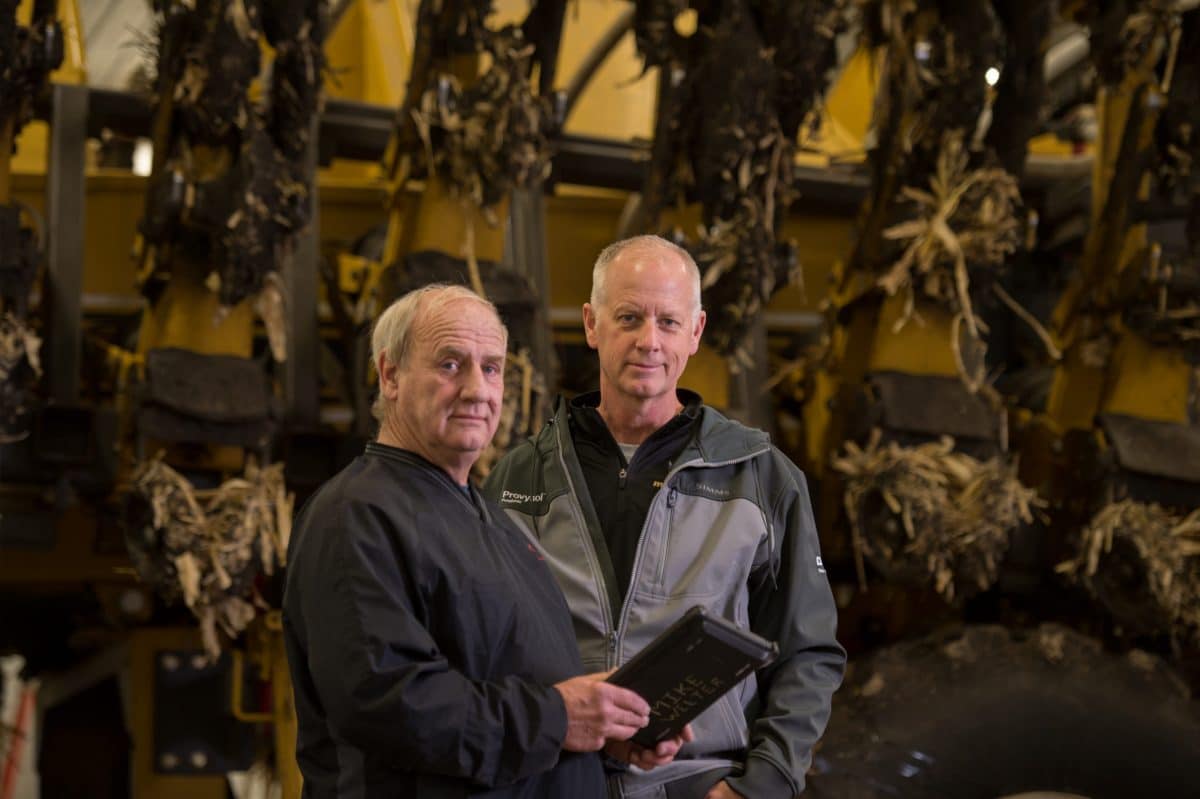Brian and Sandy Ryberg started farming with his father in 1986 with 1,000 acres. They’ve since grown the farm to 5,300 acres and perform custom work on 700 additional acres. Located near Buffalo Lake, Minn., the Rybergs farm some of the more productive land in the country. They work hard at keeping it that way by engaging experts and incorporating 4R Nutrient Stewardship practices.
Ryberg has worked with Mike Welter, Central Regional Cooperative account manager, for more than 20 years to source fertilizer and crop protection products. Dan Schmitz, an independent crop consultant, works with them to develop a nutrient prescription.
Schmitz is a firm believer in the 4Rs and always considers the best ways to mitigate risks of mobile nutrients. “Not every farmer has the same resources and logistical capabilities, so these are part of every 4R discussion we have.”
The value of 4R practices are more evident each year. Strip tillage is saving money. Ryberg previously applied anhydrous ammonia in the fall for 100 percent of nitrogen needs. Now, split applications produce higher yields with greater efficiency. In 2018, the farm produced 220 bushels of corn per acre on 180 pounds of nitrogen, or 0.82 pounds per bushel.
Ryberg now applies only phosphorous and potassium with fall strip tillage. In the spring, he applies 35 percent of the nitrogen, along with sulfur and starter fertilizer with the planter. A pre-emergent herbicide using 32 percent nitrogen as a carrier, delivers an additional 25 percent. The balance of nitrogen and sulfur needs are met with a sidedress application.
After five years of strip tillage and a full implementation of the 4R program, Ryberg Farms has increased yields by five percent and improved ROI. In addition to a 24 percent reduction of nitrogen, the team has reduced leaching risks through split applications. This saves about $15 per acre. Plus, strip tillage rates have been cut to 75 percent of broadcast rates, an approximate $12 per acre savings.
Best Practice Management
- Variable-rate application of nutrients
- Account for nutrient credits from previous year to determine rate
- Account for nutrient credits from previous year to determine nutrient application rate
- Use end of season stalk test to evaluate crop uptake of nutrients
- Split application of nutrients
- Use in-season nitrogen management tool
- Use in-season plant tissue test to evaluate effectiveness of fertilizer program and as a diagnostic tool
- GPS precision planting
- GPS precision nutrient application
- GPS tillage
- Use satellite imaging to help identify yield potential and nutrient management plans
